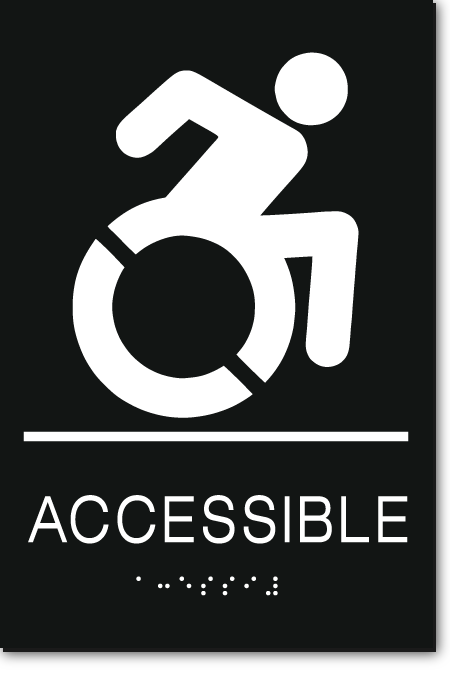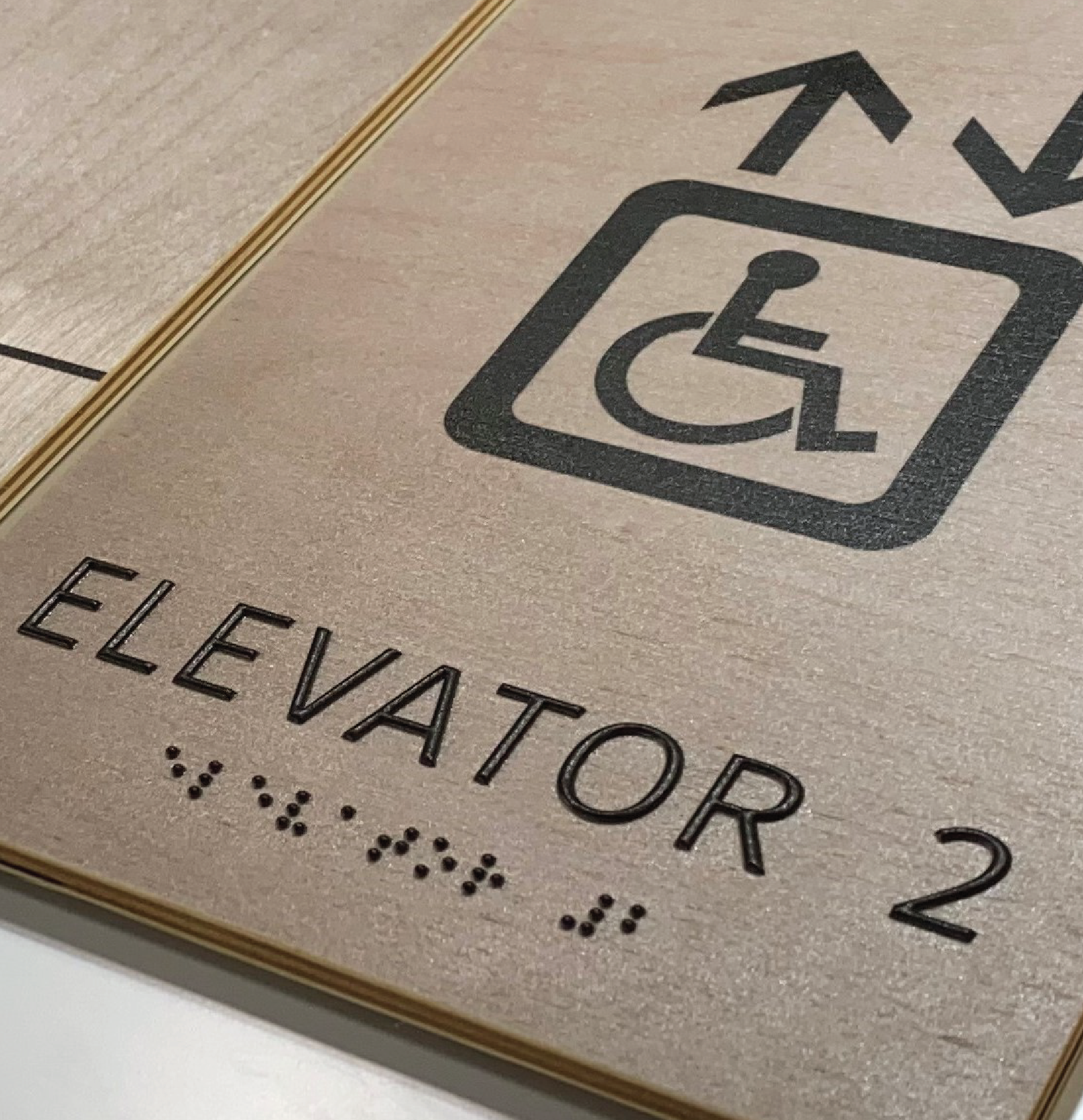A Comprehensive Guide to Selecting the Right ADA Signs
A Comprehensive Guide to Selecting the Right ADA Signs
Blog Article
Exploring the Trick Functions of ADA Indications for Enhanced Availability
In the world of availability, ADA indications act as silent yet powerful allies, making certain that spaces are accessible and inclusive for individuals with specials needs. By integrating Braille and tactile elements, these indications damage obstacles for the aesthetically damaged, while high-contrast color pattern and understandable fonts satisfy varied aesthetic demands. Furthermore, their strategic placement is not approximate yet instead a calculated effort to facilitate smooth navigation. Past these features exists a deeper story concerning the development of inclusivity and the ongoing dedication to creating fair spaces. What extra could these indications represent in our search of universal availability?
Value of ADA Conformity
Making sure compliance with the Americans with Disabilities Act (ADA) is important for fostering inclusivity and equal gain access to in public areas and offices. The ADA, passed in 1990, mandates that all public centers, companies, and transportation services suit individuals with handicaps, guaranteeing they take pleasure in the same rights and chances as others. Conformity with ADA standards not just meets lawful obligations but likewise improves a company's online reputation by showing its dedication to diversity and inclusivity.
One of the crucial facets of ADA compliance is the implementation of easily accessible signage. ADA indications are developed to make sure that individuals with handicaps can quickly navigate via structures and areas.
Furthermore, adhering to ADA guidelines can minimize the danger of lawful effects and potential penalties. Organizations that stop working to follow ADA guidelines may face lawsuits or charges, which can be both damaging and economically troublesome to their public image. Hence, ADA compliance is essential to promoting a fair atmosphere for every person.
Braille and Tactile Elements
The consolidation of Braille and tactile components into ADA signs personifies the principles of access and inclusivity. It is typically placed under the equivalent text on signage to make certain that people can access the information without aesthetic help.
Tactile components extend past Braille and consist of raised personalities and icons. These parts are made to be noticeable by touch, permitting people to identify space numbers, toilets, exits, and other important locations. The ADA establishes certain guidelines relating to the dimension, spacing, and positioning of these responsive components to enhance readability and make sure consistency across various environments.

High-Contrast Color Systems
High-contrast shade schemes play an essential function in improving the visibility and readability of ADA signage for individuals with aesthetic problems. These systems are vital as they maximize the difference in light reflectance in between message and history, guaranteeing that indicators are easily noticeable, even from a distance. The Americans with Disabilities Act (ADA) mandates the usage of particular color contrasts to fit those with restricted vision, making it a crucial aspect of conformity.
The efficiency of high-contrast shades depends on their capacity to stand apart in numerous illumination conditions, consisting of poorly lit settings and areas with glare. Commonly, dark text on a light history or light text on a dark background is used to accomplish optimum contrast. Black message on a yellow or white history offers a stark visual distinction that helps in fast acknowledgment and understanding.

Legible Fonts and Text Size
When considering the layout of ADA signs, the choice of understandable fonts and proper message dimension can not be overemphasized. The Americans with Disabilities Act (ADA) mandates that typefaces must be sans-serif and not italic, oblique, manuscript, very ornamental, or of uncommon form.
The dimension of the message likewise plays a pivotal function in access. According to ADA guidelines, the minimal message elevation need to be 5/8 inch, and it must boost proportionally with viewing distance. This is particularly vital in public areas where signage requirements to be read promptly and properly. Uniformity in text size adds to a cohesive visual experience, helping individuals in navigating environments successfully.
Additionally, spacing in between letters and lines is integral to readability. Adequate spacing avoids characters from appearing crowded, improving readability. By adhering to these standards, developers can considerably enhance availability, making certain that signage offers its desired function for all individuals, no matter their aesthetic abilities.
Reliable Positioning Techniques
Strategic positioning of ADA signs is necessary for optimizing availability and guaranteeing compliance with lawful requirements. Correctly located signs lead people with handicaps properly, promoting navigating in public areas. Key factors to consider consist of proximity, presence, and elevation. ADA guidelines stipulate that indicators must be installed at a height between 48 to 60 inches from the ground to ensure they are within the line of sight for both standing and seated people. This basic elevation range is vital for inclusivity, allowing wheelchair individuals and people of varying elevations to gain access to info easily. read here
Furthermore, indications have to be placed surrounding to the latch side of doors to enable very easy identification prior to entrance. Consistency in indicator positioning throughout a center boosts predictability, lowering complication and enhancing total user experience.

Final Thought
ADA signs play an important function in promoting ease of access by integrating functions that deal with the needs of individuals with disabilities. These elements collectively cultivate a comprehensive setting, highlighting the value of ADA compliance in guaranteeing equal access for all.
In the world of access, ADA indicators offer as silent yet powerful allies, making certain that rooms are comprehensive and accessible for people with impairments. The ADA, enacted in 1990, mandates that all public article centers, companies, and transportation services suit individuals with impairments, guaranteeing they appreciate the exact same rights and opportunities as others. ADA Signs. ADA signs are designed to make certain that people with specials needs can quickly navigate via rooms and buildings. ADA standards state that signs should be placed at an elevation between 48 to 60 inches from the ground to guarantee they are within the line of view for both standing and seated individuals.ADA indicators play an important role in advertising accessibility by incorporating features pop over to this site that resolve the needs of people with impairments
Report this page